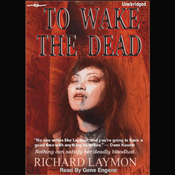The title piece, "The Overland Kid," is the last and longest, the sixth of the very popular Reata stories from the 1930s (this one was published in 1934); "George Owen Baxter" was the official author of this series of stories, connected by little other than the main character. Unfortunately, it is also the weakest of the three novellas, mainly because its main character, a man who eschews guns in favor of his trusty lariat, is simply too good to be true.
Reata's method of getting into trouble is by returning stolen gold to the bank it was stolen from. The thief wants it back and tries to get people to kill Reata and get "his" gold back. These include the Overland Kid, a gunfighter considered nigh unbeatable. It's a decent read, though a bit long at 110 pages. But fans of the character will probably enjoy it. The other two novellas are simply better.
First up in The Overland Kid is "The Cabin in the Pines," first published in 1922 under the name "John Frederick." It concerns Babe Rourke and Angus Cairn, two men who are so great in their own circles that learning of each other's reputation causes them to seek out one another for a confrontation: they believe they are enemies just by their very existence.
When they eventually run into each other, they decide to take their feud up to the titular location. There they meet up with Nell, a woman in distress, whereupon they must put aside their differences and work together to save Nell from her pursuers (while each wooing her in his own way).
But the best piece by far in The Overland Kid is the novella in the middle, entitled "Joe White's Brand." This one was also published in 1922, but under the George Owen Baxter byline. Thirty years ago, Joe White was called "Young Stallion on Fire" by the Indians, but that was three decades ago, and time has taken a lot of the fire out of this no-longer-young stallion.
But time has not lessened his reputation, and White is constantly on the run from young up-and-comers looking for a quick reward and a quick reputation from killing the legend. This time, a skinny fellow wearing a red bandanna comes after Joe and eventually wipes out his entire posse. Some are killed, and some leave out of fear, with Joe left to fend for himself. But Joe White is in for a big surprise when he and "red bandanna" finally meet up.
"Joe White's Brand" is a surprisingly fast-moving, suspenseful tale with a great deal of unexpected emotional depth, and Joe White is one of the most fully developed characters I have come across in some time — even in Brand's work, which is full of such characters. This short novel is one of the best things I have read by Max Brand yet, and it soundly defeats the other entries in The Overland Kid.








.png)






















 First off, there's something bothering me that I have to get out of the way right off the bat. Amara, the main subject of
First off, there's something bothering me that I have to get out of the way right off the bat. Amara, the main subject of